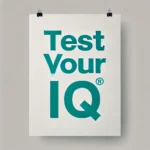Mastering Free Online Teaching Degree: Step-By-Step Guide can feel overwhelming at first, but with a clear plan you can earn credentials, gain classroom-ready skills, and minimize costs. This article walks through practical steps to locate tuition-free options, validate program quality, build a portfolio, and prepare for licensure or alternative certification pathways so you can start teaching sooner.
A Stepwise Plan for a Free Online Teaching Degree
Not all “free” programs are created equal. Some are fully tuition-free degree pathways, others provide free coursework that can be stacked into a credit-bearing program, and a few offer heavy scholarships and fee waivers. Follow these steps to evaluate and complete a low-cost or tuition-free teaching credential.
1. Define your teaching goal
Decide whether you want to teach early childhood, elementary, secondary, or special education. Licensing requirements vary by grade and state, so target programs that map to your desired credential. If you plan to teach in public K–12 schools, confirm the program aligns with state certification standards.
2. Identify legitimate tuition-free or low-cost providers
Look for accredited institutions, competency-based programs, or accredited alternative certification pathways that offer free coursework, income-share agreements, or scholarships. Public universities sometimes run tuition-free MOOC-to-credit partnerships. Avoid programs that promise certification without any regulated coursework or supervised practice.
3. Verify accreditation and state acceptance
Accreditation ensures coursework meets academic standards; state education departments determine whether a program leads to licensure. Contact your state licensing board to confirm a program’s acceptability before enrolling. This step prevents wasted time on courses that won’t count toward certification.
4. Build field experience remotely and in person
Many online teaching degrees incorporate practicum or student-teaching components. Seek programs that arrange supervised placements. If the program is self-paced or MOOC-based, proactively secure volunteer classroom hours, tutoring roles, or substitute teaching where allowed.
Costs, Funding Strategies, and Related Considerations
Even tuition-free paths often have fees for exams, background checks, textbooks, and student-teaching supervision. Plan a realistic budget and explore these cost-saving strategies:
- Apply for need-based grants, state scholarships, or institutional emergency funds.
- Use open educational resources (OER) and library access instead of buying every textbook.
- Bundle free MOOCs with credit-eligible assessments where available to convert learning into earned credits.
For budgeting examples from other vocational programs you might compare against, see EMT school costs: what you need to budget to understand typical peripheral expenses like certifications and exam fees.
Teaching Profession Pathways and Labor Outlook
Before committing, review occupational outlooks and salary ranges for your target teaching level. Official labor-market resources explain demand, typical entry requirements, and long-term career prospects; these help you weigh accelerated free programs versus paid degrees. For a reliable occupational overview, consult the Bureau of Labor Statistics’ guide on teacher roles and job outlooks: Bureau of Labor Statistics: Elementary School Teachers.
Tips to accelerate completion
- Prior learning assessment: Document prior teaching, tutoring, or relevant work to earn credit.
- Competency-based testing: Opt for programs that award credit for demonstrated mastery rather than seat time.
- Network with mentors and current teachers: Practical advice can help you navigate certification exams and interviews faster.
Creating a Portfolio and Preparing for Certification
As you complete coursework, build a digital portfolio with lesson plans, video recordings of teaching (if permitted), assessment samples, and reflective statements. A polished portfolio complements transcripts when applying for jobs or alternative certification programs and showcases your readiness to employers and licensing boards.
Final checks before applying for licensure
Confirm that:
- All required supervised hours are documented and supervised by qualified personnel.
- Teacher-preparation courses meet state content and pedagogy standards.
- You’ve scheduled any required licensing exams and prepared using practice materials aligned to your state’s standards.
Short Checklist
- Confirm program accreditation and state approval
- Plan for practicum or student-teaching logistics
- Budget for exams, background checks, and fees
- Build a teaching portfolio as you go
Frequently Asked Questions
Q: Can I become a licensed teacher entirely online and tuition-free?
A: Some pathways allow online coursework combined with in-person supervised practicum to meet licensure requirements, but fully tuition-free options are rare. You’ll usually face some fees for exams or placement supervision.
Q: How do I know if an online program will be accepted by my state?
A: Contact your state department of education directly and ask whether a specific program meets initial teacher licensure requirements. Keep written confirmation when possible.
Q: What if I want to teach but don’t need a state license?
A: Private schools, charter schools, and tutoring platforms sometimes hire teachers without state licensure. In those settings, a strong portfolio, subject-matter expertise, and experience can substitute for formal licensure.



